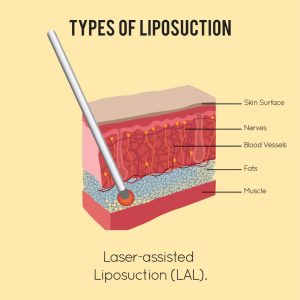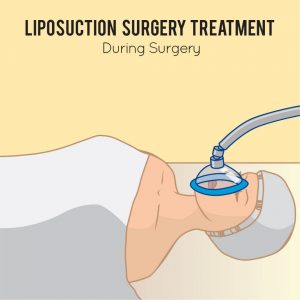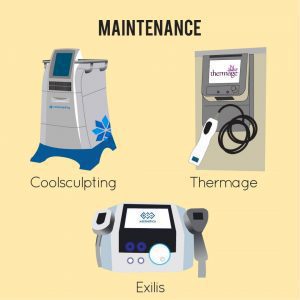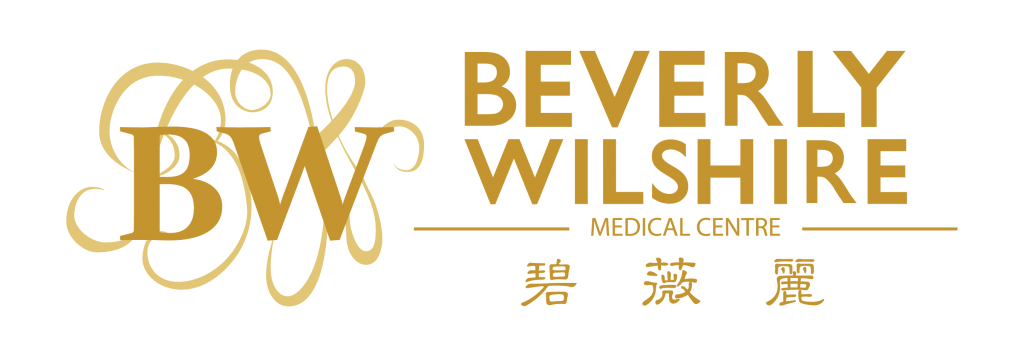What is Liposuction?
Liposuction, also known as body contouring, lipoplasty, liposculpture suction, lipectomy or simply just lipo to some, it is a surgical procedure that removes fat from specific areas of the body. At Beverly, we offer two types of liposuction: Tumescent liposuction and Laser-assisted liposuction (LAL). It is done through a thin tube that is hollow known as a cannula. The cannula is inserted under the skin and a powerful high-pressure vacuum breaks up the fat and suctions it out.
Types of Liposuction
Tumescent liposuction: The most common type of liposuction. The surgeon will start by injecting a sterile saline solution – a mixture of salt water, which aids fat removal, an anaesthetic (lidocaine) to relieve the pain and a drug (epinephrine) that helps the blood vessel to constrict – into the area that’s being treated.
The surgeon then makes small incisions into your skin in pre-marked areas and inserts a cannula (thin tube) into your skin. The cannula is connected to a vacuum that suctions fats and fluids from your body. Meanwhile, your body fluid will be replenished through an intravenous line.

Laser-assisted liposuction (LAL): In Beverly, we call this procedure Cool Lipo, this particular method uses a laser light to break down the fats for removal. It is a less invasive and bloody procedure than traditional liposuction method. During the procedure the surgeon inserts the laser fiber through a small incision in the skin and liquifies fat deposits by laser energy and heat, the melted fat is then removed via cannula (thin tube).
Areas that liposuction could be done:
- Chin and neck
- Abdomen
- Upper Arms
- Chest and Back
- Hips and thighs
- Calves and ankles
- Buttocks
- Can also be used for breast reduction or gynecomastia (man boobs)

What Type of Patient is Suitable?
Liposuction is suitable for patients that:
- Have a stable body weight and exercise but still have stubborn areas of body fat that they like to remove.
- Liposuction works best for people who have good skin tone and elasticity, where the skin moulds itself into new contours. People who have poor skin elasticity may find that their skin is loose in areas that have been treated.
- If you gain a bit of excessive fat, liposuction may be an option. However, liposuction is not an overall weight-loss method, it does not treat obesity. If you are looking to lose a lot of weight it would be better to do gastric bypass surgery first.
 Things to Take Note
Things to Take Note
- Liposuction does not improve or remove cellulite, dimpling, stretch marks or other skin surface irregularities. Liposuction is purely aesthetic and suits those who wish to change or enhance the contour of their body.
- Liposuction permanently removes fat cells and may alter the shape of the body. If the patient does not lead a healthy lifestyle after the operation, there is a chance that the remaining fat cells will grow bigger.
- The procedure is meant for body contouring, not for extreme weight loss. The amount of fat cells that can be removed is limited.
- You must be in good health conditions (don’t complicate the surgery process) – no problems with restricted blood flow, coronary artery disease, diabetes or weak immune system.
- You must get checked by a plastic surgeon before the procedure can be done
Before Surgery
It is important to have a discussion with your surgeon before the surgery to discuss your expectations. The surgeon will review your medical history and ask about any conditions that you may have and any medications, supplements or herbs you may be taking. Certain medications like aspirin need to be stopped as they can increase bleeding, the doctor will tell you when to stop taking them.
You might need to undergo some health tests to ensure that you are fit for surgery.
Arrange to have someone with you to drive you home and to stay overnight as you will be warded for at least a night.
On the day of the surgery the patient will be checked-in and examined by the nurses. The surgeons will then do necessary markings before the procedure. Once that has been completed, the anaesthetist will inspect the patient and put them under local or general anaesthesia.
During Surgery
How the liposuction procedure is done is based on what you have discussed with your surgeon prior. Your surgeon will select the appropriate technique that matches the end goal, considerations will be made on which area that needs to be treated and whether you have had a liposuction procedure done in the past.
You will be given a sedative for the duration of the procedure, either through local or general anaesthesia depending on the area of your body, smaller area like chin can be done through local anaesthesia, larger areas will require general anaesthesia which induces a temporary unconsciousness. Another reason that the surgeons prefer to use general anaesthesia is because Liposuction can be a long procedure, this will ensure the patient’s comfort.

After Surgery & Recovery
After the surgery, you will be sent to your ward room, where you will slowly wake up from the general anaesthesia. You will be monitored by the nurses and they will check your heart rate, blood pressure and oxygen levels. You will be required to stay overnight for further observation, to make sure there is no complications.
It will be a few days before you are fit to return to work and another few weeks before you can resume normal activities (including exercise). After several months you can expect to see the treated area to have a leaner appearance.

Maintenance
Apart from the usual exercise and diet, you can check out these following procedures to help maintain your leaner appearance.
- Exilis; great for skin tightening and improves collagen
- Thermage; treats wrinkles and loose skin on the body, as well as face and around the eyes
- Coolsculpting; a non-surgical, fat-freezing technique that gets rid of stubborn fats

Possible Side Effects/Risks
As with all major surgeries, liposuction carries risks. It’s important to be aware of possible complications and discuss your concerns and expectations with the plastic surgeon before deciding whether liposuction is right for you. Patients who are aware of the pros and cons before the surgery yields most satisfying results. Some of the possibilities include:
- Bruising and inflammation: It’s normal to get bruising and some inflammation and may last a few weeks.
- Contour irregularities: Your skin may appear bumpy, wavy or look withered due to uneven fat removal, poor skin elasticity or unusual healing. This could be caused by damage from the cannula (thin tube) that is being used during the liposuction procedure.
- Fluid accumulation: Temporary pockets of fluid (seromas) can form under the skin. The fluids need to be drained and can be done by needle.
- Numbness: You may experience temporary or permanent numbness in the affected area.
- Infection: Skin infections are rare but possible and can be life threatening. Antibiotics are usually given after the operation to prevent this.
- Allergic Reaction: Patient may be allergic to certain medications or materials being used during the surgery. To prevent this, patients should inform staff beforehand if they are allergic to anything.
That being said, it is important to choose a qualified, meticulous and experienced surgeon to handle the procedure to ensure your safety and comfort. Dr. Abdul Jalil Jidon is one of Malaysia’s leading plastic, reconstructive and cosmetic surgeons. A board-certified surgeon at the National Specialist Register, Academy of Medicine of Malaysia, Dr. Jalil is also a member of Malaysian Association of Plastic, Aesthetic, and Craniomaxillofacial Surgeons (MAPACS).






